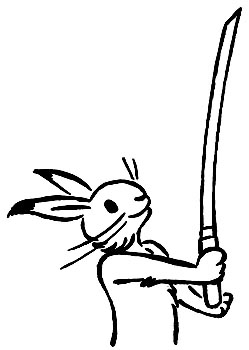TACHI and KATANA, (what is the difference between them?)

"Tachi or Katana???"
In primary meaning, Tachi and Katana are types of sword mount.
Tachi is a style that slings the sword by a cord from the waist. The cutting
edge of sword is downward.
Katana is a style in which the sword is stuck into the waist belt. The
cutting edge of sword is upward. "Uchigatana" has the same meaning
as "Katana".
Historically, the tachi mount was popular from the 12th through 15th centuries.
A katana mount was still rare in this time. It was a mount for lower class
soldiers.
The katana mount gained popularity in the 15th century and it has been
common until the very end of the samurai age.
(=> KOSHIRAE, sword mounts)
The terms "Tachi" and "Katana" are also used for sword
blades themselves. Both define a blade that is 60cm or more in length.
"Tachi blade" means a blade that is suitable for tachi mount,
or is made as a tachi.
"Katana blade" means a blade that is suitable for katana mount,
or is made as a katana.
The faces of these blades are opposite. When the sword is worn, the outside
is an obverse side, and the inside is a reverse side. And so is on the
blade.
Therefore, in Japanese museum, tachi blades are displayed cutting edge
down while katana blades are mounted cutting edge up.
Usually, tachi blades have a deeper curvature than katana and the tang
also curves in accord with the blade. Katana blades have shallower curvature
and their tang have a smaller curvature than the blade.
The smith's signature should put on the obverse side of the tang.
Blades that are shorter than 60cm blade in length are called "Wakizashi".
But such a short blade in a typical tachi style is specially called "Ko-tachi".
It means "small tachi".
When a tachi blade is shortened to the point that its original tang disappears
it becomes to be called katana.
The clues to distinguish a blade as "tachi" or "katana"
are age, form, and the side that bears the signature.
However, we can't so define all blades. There are some blades that are
hard to distinguish because some schools' smiths traditionally put their
signature on the reverse side and the form of blades can't be readily defined.
With blades there are "exceptions to the rule" all the time.
TACHI blades
"Osafune Yukisada" (in 1376 AD)

Modern Tachi blades


Kissaki-moroha-zukuri style


KATANA blades
Shortened Tachi blade from 13th century

"Sukehiro" in 17th century

"Yukihira" in 20th century

Home > Information > Tachi and Katana




![]()
![]()